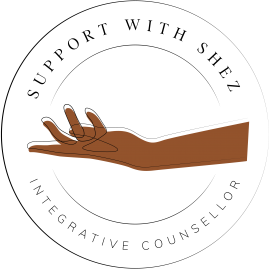THERAPY STYLE
There are various therapies and modalities in counselling and psychotherapy. Before starting counselling sessions, it can be useful for clients to learn about their therapist’s training and therapy approach.
Shez is trained in 3 psychological theories and her approach to counselling is integrative. Although the theories are conceptually different, they have similar foundations which allows their integration. The 3 theories are summarised below for your understanding.
Each counselling session is carefully tailored to suit your counselling goals and presenting issues. Shez will use an integrative approach for the most part, however, sometimes a single theory may be more appropriate or beneficial for you.

INTEGRATION OF:
1) ATTACHMENT THEORY
- Focusses on a person’s childhood experiences and development.
- Develops an understanding of how the client’s childhood has shaped them and their internal working models (how we see ourselves, others and the world).
- Helps us to determine our personal attachment style and its influence on current relationships with others such as parents, romantic partners and friends.
2) COGNITIVE BEHAVIOURAL THERAPY (CBT)
- Used to understand how our thoughts, emotions and behaviour are linked.
- Helps the client to separate thoughts from feelings.
- Clients learn simple, yet effective techniques to challenge irrational thinking patterns.
- Clients learn to recognise when they are making a ‘thinking error’.
- Allows clients to see their situations or difficulties through new and more balanced perspectives.
- Takes a clinical and surface-level approach (does not require in-depth exploration).
- Generally helps to improve symptoms in 6-10 sessions.
- Often use worksheets and diagrams to help clients to map and manage their difficulties.
3) PERSON-CENTRED THEORY
- The therapist is not the expert, instead, each individual is an expert on themselves and has an innate motivation to change, grow and develop.
- With a safe, nurturing and accepting environment, we can all reach our full potential.
- Negative environments and experiences (during childhood and adulthood) often impact our self-belief and limit our autonomy.
- The idea that we lose touch with ‘true self’ over the years.
- Guides clients and helps them to reconnect with their true self.
- Identifies the expectations and rules that clients live by and helps them to challenge the ‘conditions of worth’ placed upon them.
- The therapy room environment is safe, confidential, non-clinical, non-judgemental, empathic and fully accepting.

